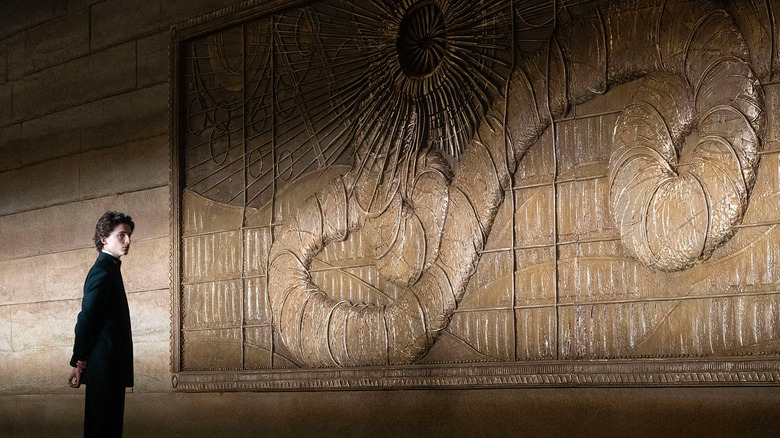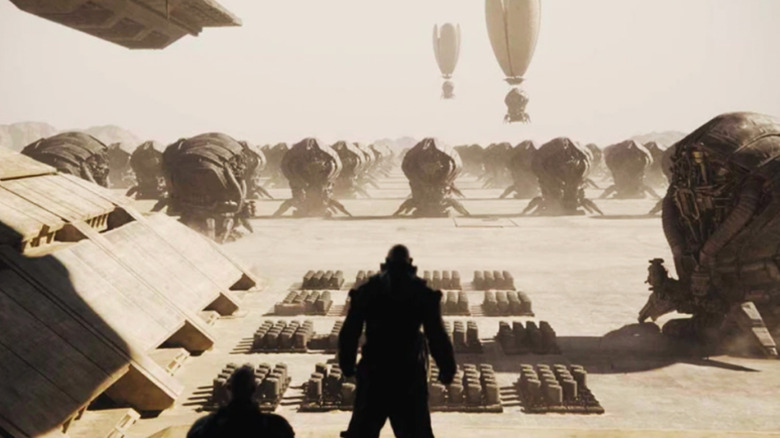The Internet Was The Biggest Enemy Of Dune's Design Team
The internet is an incredible place. It's not without its downsides, of course. But if you know where to look, it's easy to find inspiration and even empowerment. Spaces like Instagram, Pinterest and TikTok have become platforms for many artists that would otherwise have no way of showcasing their work. It's also made countless archives accessible for those without the means to conduct research any other way.
However (as many of us have already discovered), the internet isn't all good — and I'm not just talking about the darker, soul-sucking corners of the web that many of us stumbled into way too young. Even the most conducive and inspiring spaces can kill your own creativity ... at least according to Denis Villeneuve, the director of such masterpieces as "Arrival," "Blade Runner 2049" and of course, "Dune." Villenueve and his team are masters of world building: Each of his films manages to immerse the audience entirely, and each boast designs that feel unique to each project.
That ingenuity is a huge priority for Villeneuve. The director understands firsthand just how hard it can be to create original designs in a world where every idea seems to have already been discovered on Pinterest. And when it came down to "Dune," a project that Villeneuve had been developing for years, the internet was not a conducive space whatsoever. To Villeneuve, the internet was "the mind killer," a riff on the unforgettable line from Frank Hebert's book series.
So how did the director's close-knit team manage to create such inventive designs for the adaptation? By abandoning online spaces entirely.
Going analog
"One of the problems right now," explained "Dune" production designer Patrice Vermette, "is that if you go on the internet, it's actually a very shallow pool of images."
Vermette told The Hollywood Reporter that those images often serve as inspiration for many unrelated projects. "That's why you see a lot of similarity in design all over the world today." It was important to Villeneuve that those images — or any images that could be easily found online — weren't used in the design process for "Dune." Instead, the director asked his team not to conduct any research for the film online, "to stay away from all influence and just try to meditate and dream."
Most of the "Dune" designers developed ideas from what they found in library books and ancient architecture. Mesopotamian structures called ziggurats formed the foundation of the structures on Arrakis, as well as bits and pieces of Egyptian architecture and midcentury brutalism. "The sets were of quite large scale," Vermette explained, "and we wanted them to be as immersive as possible, like we did on 'Arrival' and Denis did on 'Blade Runner.'" The merits of an immersive set were beneficial both for the actors and for cinematographer Greig Fraser. More than that, it also created "ambiance" for the team, "like the whole crew feeling, 'We're in this world together.'"
Given how much their development process must have changed on the set of "Dune," it must have been incredibly rewarding for the crew to stand within their sprawling finished work together. It couldn't have been easy going analog — but if it had been easy, would it have been worth doing?

